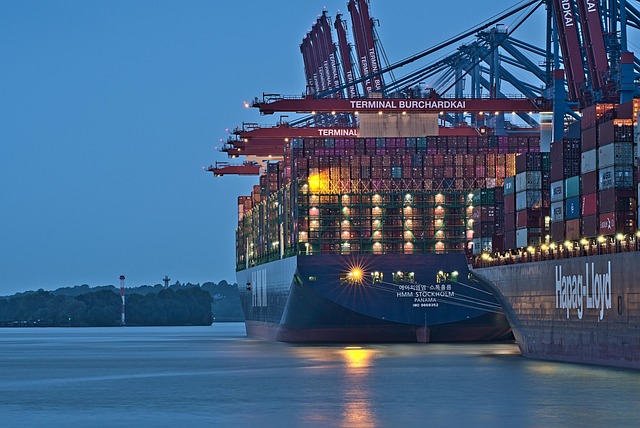Leverage trading offers significant gains but demands strict risk management. Traders must assess market conditions, understand asset dynamics, and align leverage with goals. Setting clear risk parameters, position sizing, and discipline through protocols foster stability and long-term success in this dynamic realm, using tools like stop-loss orders and real-time monitoring for informed decision-making.
Leverage trading amplifies potential gains but also carries significant risks. To navigate this high-stakes landscape, strict risk assessment protocols are paramount. This comprehensive guide delves into the essential aspects of managing leverage trading risks, from understanding nuanced market dynamics to implementing robust risk management tools and continually adjusting strategies based on evolving conditions. By mastering these principles, traders can maximize opportunities while mitigating potential losses.
- Understanding Leverage Trading Risks
- Setting Risk Assessment Parameters
- Developing Strict Protocols
- Implementing Risk Management Tools
- Continuous Monitoring and Adjustments
Understanding Leverage Trading Risks

Leverage trading, while offering the potential for significant gains, comes with a host of risks that require meticulous understanding and management. The very nature of this strategy amplifies both profits and losses, making it crucial to have robust risk assessment protocols in place. Investors who fail to comprehend the inherent volatility and potential downsides may find themselves facing substantial financial losses.
By thoroughly evaluating market conditions, asset price movements, and individual investment objectives, traders can identify suitable leverage levels for their strategies. Regular monitoring and adjustments are essential to navigate the dynamic nature of markets. Staying informed about economic indicators, geopolitical events, and sector-specific risks is vital in mitigating potential pitfalls associated with leverage trading.
Setting Risk Assessment Parameters

In the realm of leverage trading, setting risk assessment parameters is a fundamental step in managing potential losses and maximizing gains. Traders must define their acceptable risk levels based on their financial goals and risk tolerance. This involves determining the maximum percentage of their portfolio they’re willing to risk on any single trade. For instance, a trader might set a 2% daily loss limit, meaning they’re comfortable losing up to 2% of their total capital in a given day. Such parameters ensure disciplined trading and help navigate the hustle and bustle of financial markets.
Additionally, risk assessment should factor in position sizing, which refers to the amount invested in each trade relative to overall capital. Proper position sizing aligns with risk appetite by ensuring that even substantial market movements won’t cripple a trader’s portfolio. Effective risk management through these parameters is crucial for navigating the symphony of leverage trading, fostering stability, and enabling long-term success despite the labyrinthine nature of financial markets.
Developing Strict Protocols

In the high-stakes world of leverage trading, where profits and losses can be magnified, establishing stringent risk assessment protocols is non-negotiable. These protocols serve as a shield against potential disasters, ensuring traders navigate the market with a calculated and strategic mindset. By defining clear boundaries and guidelines, such as setting specific risk tolerance levels, implementing stop-loss orders, and regularly monitoring position sizes, traders can maintain discipline and avoid impulsive decisions.
Developing these strict protocols involves an introspective look at one’s trading style, risk appetite, and market understanding. It requires constant evaluation and adjustment to adapt to evolving market conditions. Through rigorous testing, backtesting, and continuous learning, traders can refine their strategies, enhancing their chances of success in the dynamic realm of leverage trading.
Implementing Risk Management Tools

In the high-stakes world of leverage trading, effective risk management is not just an option—it’s a necessity. Implementing robust risk assessment tools is the first step in protecting capital and optimizing returns. These tools enable traders to meticulously analyze potential risks associated with various strategies, market conditions, and instrument types.
By integrating advanced risk management software, traders can set precise stop-loss orders, define risk-reward ratios, and monitor positions in real time. Such measures ensure that even when leveraging substantial amounts, potential losses remain controllable. This proactive approach not only safeguards against significant drawdowns but also empowers traders to make informed decisions based on comprehensive risk assessments, ultimately enhancing their overall trading performance.
Continuous Monitoring and Adjustments

In the dynamic landscape of leverage trading, successful strategies demand continuous monitoring and adjustments. Traders must be vigilant in tracking market conditions, price movements, and potential risks in real-time. This proactive approach ensures that positions are managed effectively, allowing for swift responses to changing dynamics. By regularly assessing and reevaluating risk exposure, traders can make informed decisions, minimizing losses and maximizing gains.
Adjustments in leverage trading aren’t just about cutting losses; they involve tactical shifts based on market insights. Traders who stay ahead of the curve can utilize emerging trends, identify new opportunities, and fine-tune their strategies accordingly. This continuous cycle of monitoring and adjustment is a cornerstone of successful leverage trading, fostering adaptability and resilience in an ever-evolving financial environment.
Leverage trading strategies, while powerful, come with inherent risks that demand meticulous management. By understanding these risks, setting clear parameters, and implementing strict protocols, traders can navigate the markets effectively. Continuous monitoring and adjustments are vital to mitigate potential losses, ensuring successful and sustainable leverage trading practices. Remember, proper risk assessment is key to unlocking the full potential of leverage while maintaining a safe and profitable approach.
